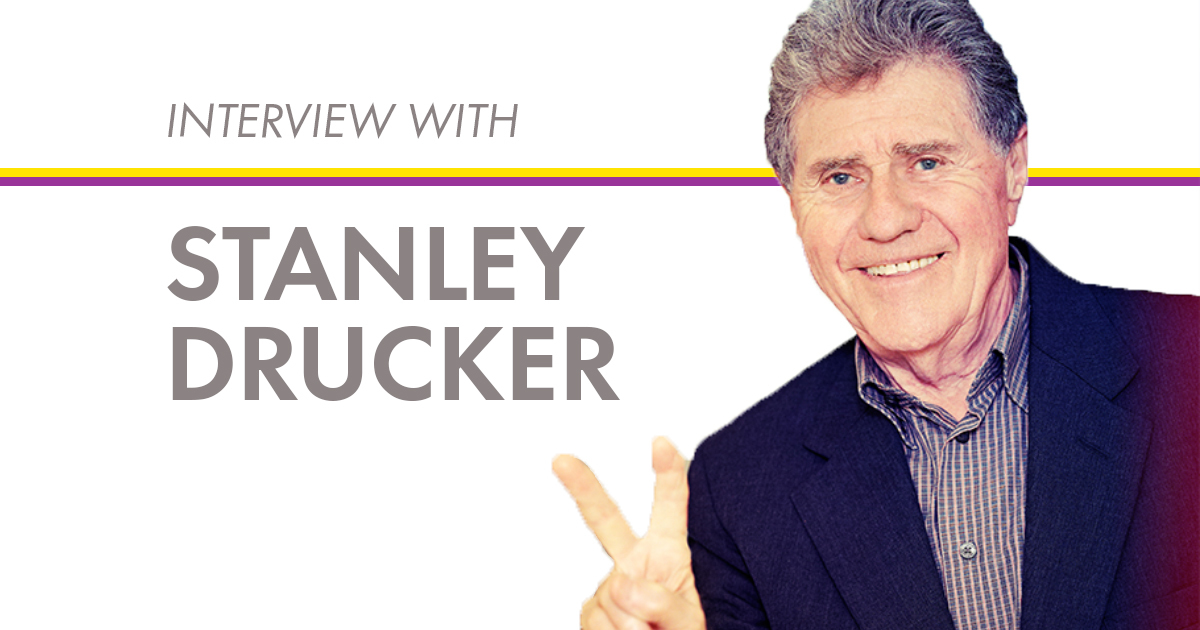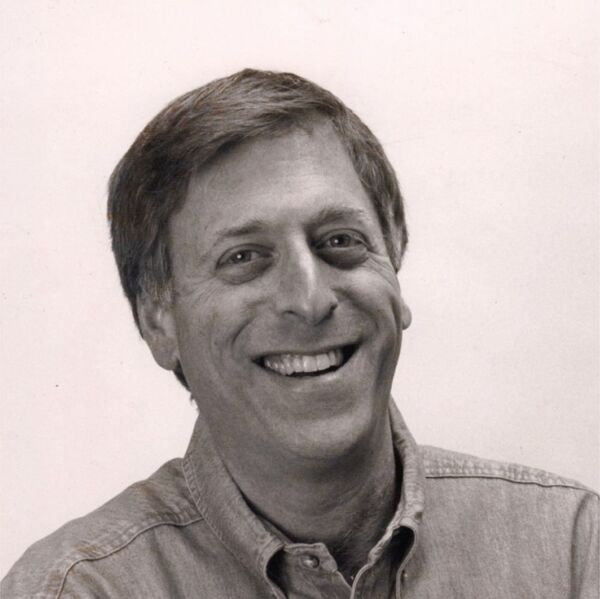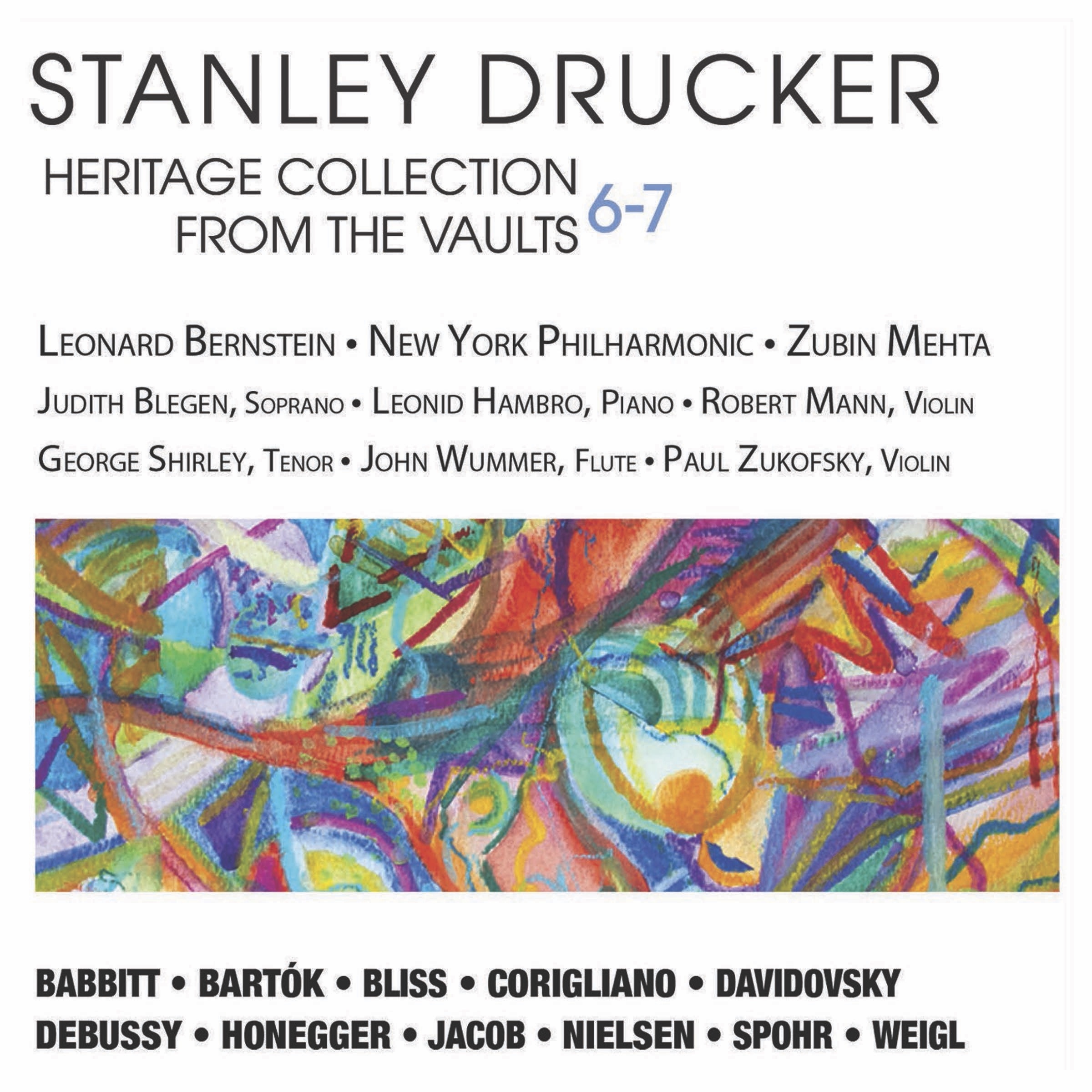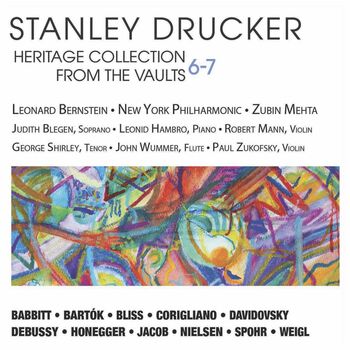Stanley Drucker's Vandoren Memories, Performing 10,200 Concerts, Orchestral Memories, and His Heritage CD Set
Date Posted: August 20, 2019

What are some of your earliest memories with Vandoren?
The first time I heard the name Vandoren was when I was a kid and there was a little neighborhood music store that had a large box… I think there might've been 100 reeds in that box. In those days, there were no numbers on the reeds, just the name 'Vandoren'. Every strength was in the box of reeds. It was like buying an assorted box of chocolates...This was going back to the 1940s. So that was my introduction.
My real introduction to Vandoren was the first time I was in Paris. It was with my first tour with the New York Philharmonic to Scotland at the Edinburgh Festival. After the 2 weeks of concerts, the season ended (they didn't have the year-round seasons in orchestras in those days). We were given a choice whether to stay for 2 or 4 weeks longer or come right home. Naturally, I was 21-years-old and I was going to go to Paris.
We got on the boat train and went to Paris, and our solo flute player, John Wummer, who was a marvelous musician, recommended to us a small hotel in Montmartre. It turned out this little hotel was around the corner from the historic Vandoren building. I went to Vandoren and I saw people working on the reeds. Today's Vandoren studio is a bit more glamorous with the showroom and the little recital hall, and a place to peruse music. But at that time, it was a working plant. I saw one room where the tube cane was being split by a triangular tool and fell into 3 parts. I saw all the manufacturing going on, by hand, which was amazing! I’ve never seen anything like that in my life.
Then someone said they wanted to introduce me to Robert Van Doren (the father of Bernard Van Doren). I met this gentleman who had been a performing clarinetist and a graduate of the Conservatoire. That was really exciting because you hear about these things as a kid and until you see it in action and get the atmosphere, I thought it was an amazing memory. That was the first time I was at Vandoren.
In later years, I used to visit every time we were in Paris, on vacation, or with an orchestra tour. One year I was down in the south (where the big factory is located and Bernard lives). We had a wonderful time being with the Van Dorens. Going out on the water, he had a nice runabout: 23ft Bertram which is a very fine make of boat. We really got to sample what it is that makes you tick when you do something. When you create something, like the Van Doren reed, you wonder what life is like other than that. Then you see the amount of joy in what they're doing. He was a wonderful man.
My experiences of all the years I've played - those highlights stay with me. They lie as fresh as when they happen.
Why did you choose the clarinet?
As a kid you don't 'choose' that much - you're handed something! There must've been a reason for it: The Big Band Era with the Benny Goodman and Artie Shaw "world" of clarinet. And then there were the Klezmer clarinet players: Dave Tarris and Naftule Brandwein who they called the Goodman/Shaw of Klezmer music. Another reason was that the instrument was very cheap. It wasn't a high-end violin or piano. They gave me a clarinet for my 10th birthday. It was a used Buffet clarinet and it was quite good.
Were you in a school band program?
There wasn't much music in my elementary school. Some schools had music programs but they had orchestras. You didn't get to do much. But when it got time for high school, I auditioned for a high school music & art: Uptown Manhattan. Half the student body was music and the other was art. It took me about 45-50 minutes from Brooklyn to get to this school and the school was great! It had 6 orchestras, 2 bands, and there were rehearsals every day. It was a nurturing faculty that were very talented and involved.
While I was at that school sopping everything up I could, I wanted to go to a conservatory. We thought Juilliard would be the best place to go, but a friend suggested applying to Curtis. I took the audition and got in.
What was it like to be at Curtis?
It was a great school because it was like a family and was in a beautiful building. It was a former mansion in Rittenhouse Square, Philadelphia with a great history. You got to hear every rehearsal and concert of the Philadelphia Orchestra in the Academy Music Great Hall which was a block away from the school. They had a weekly broadcast for the school to play on the radio every week and we got paid for it.
How did you start auditioning?
While there (at Curtis) I started taking auditions - everybody took auditions as much as they could. I auditioned for a conductor that was coming through Philadelphia for the Indianapolis Symphony: Fabien Sevitzky (who was a nephew of Serge Koussevitzky, the conductor of the Boston Symphony).
Auditions were very different in those days because you never knew what you were going to be playing. You played what you had prepared first and then they put music out and said play this. The conductor ran the auditions and if he liked somebody, you got hired. It was as simple as that. But if he didn't like you 2 weeks later, you were out. There was no tenure or job security. The seasons were also short. The Indianapolis Symphony had 22 weeks in their season. It was exciting because every program and piece was new. You either learned the new repertoire fast or you went into a different profession. It was a great experience doing that.
After auditioning for the Busch Little Symphony that was an 8-week touring orchestra. It paid 3x more than the Indianapolis Symphony, but had a shorter season. The positive to it was that you got to play with better people. Everybody moved around. Busch said he wanted to talk to a couple of conductors about me since he liked me. He said I had to play for the conductor William Steinberg who was a protege of Toscanini and the conductor of the Buffalo Philharmonic. I auditioned for Steinberg and I won the job.
Buffalo was terrific and paid more than Indianapolis. It had a beautiful concert hall, the repertoire was big, and it had a world-class conductor. I didn't realize it, but Busch had spoken to the other conductors and I got a message that the New York Philharmonic was holding a clarinet audition and invited me to come play. I was in Buffalo at the time and naturally I said sure!
It was in the Green Room at Carnegie Hall. It was Bruno Walter who was the music adviser and a committee of musicians. I played what I had prepared for the committee. Then they put out music and one of the pieces was the Overture to Tannhäuser. Walter sat down at the piano and played the orchestral part. I heard Walter say to the managers, "He'll be a valuable member of the orchestra." I got the acceptance letter in the next couple of days and I signed it. I started the next season in 1948-'49.
How were your experiences with some of the conductors in the NY Philharmonic?
Bruno Walter was an icon, a protégé of Mahler. Leopold Stokowski, an innovator, who had a feeling for sonority. Dimitri Mitropoulos was a genius who didn’t have to use scores in rehearsals. Leonard Bernstein was an incredible time. He never really left us because he came back as guest conductor plenty of times. He was the conductor for 11 years which was a good span for the Philharmonic. Then for a short period of time was George Szell, a classicist who was music adviser after Bernstein. Then came Pierre Boulez who was great, Zubin Mehta who was dynamic and was there for 12 years. Kurt Mazur and Lorin Maazel who was a violin and conducting prodigy.
"People try to find the 'secret' to how you do something. There is no secret! You do what you have to do as best as you can, but, it helps if you have a little bit of luck." - Stanley Drucker
What was touring with the NY Phil like?
I got a lifetime of memories because we toured everywhere. We played in Australia, New Zealand, Ireland, South America, Europe, and Asia. There were some major tours throughout the years. We played a 10-week tour that covered every country in Europe. We got to experience a different world.
I did many solos on tour. I played the Corigliano Concerto on tour. I did Copland Concerto multiple times. The New York Philharmonic kept records of all the concerts and they think I played 10,200 concerts!
In 2009, I played my final performance of the Copland Concerto with the Philharmonic. The biggest surprise for me was that I was named an honorary member of The Society. Since 1842, only 65 people were given that honor.
I look back on it and believe I gave it my all. I have no regrets. It was a long run and now you pass the flag onto the next generation. That's my story.
I wish everybody success, to go for it, to give it your all, and never say no when you're in harness. People try to find the 'secret' to how you do something. There is no secret! You do what you have to do as best as you can, but, it helps if you have a little bit of luck.
Vandoren sat down with clarinetist, colleague, and producer of Stanley Drucker's Heritage Collection CD, Jerome Bunke, to discuss the latest volumes 6&7.

Tell us about the Heritage Collection and the expansion of the CD-set?
Throughout Stanley's remarkable career, what I've marveled at is the fact that he’s had a very active career doing solo and chamber music performances. These concerts ran the gamut from formal settings such as The Library of Congress to informal settings around his Long Island-area home. They feature unusual repertoire and remarkable performances with the Juilliard String Quartet (Mozart and Brahms), Arnold Steinhardt (the first violinist of the Guarneri Quartet), and his wife Naomi, who is an accomplished clarinetist. The fact that he combined this with his full schedule with the New York Philharmonic was amazing.
Many of these concerts were recorded live and taped and we culled through them, edited, and remastered them. We cleaned them up but maintained the essence of live performances. The musicianship and the technical prowess make them unique
The Heritage Collection consists of 7 volumes. The first 5 volumes feature Stanley - Live In Concert – in chamber music settings. The repertoire includes Mozart, Weber, Stravinsky, Brahms, Spohr, Debussy and Bernstein; And pieces that are not part of the usual repertoire: Boulez, Bax, Mason, Poulenc, Martinu, Crusell, Szalowsku and Prinz. In essence, the history of the clarinet repertoire.
The 6th and 7th volumes , a 2 CD set, contain many recorded pieces that have not been issued on CD. These range from the Bartók Contrasts that was recorded in 1954 by Peter Bartók (the composer's son) to the Corigliano Concerto with the New York Philharmonic conducted by Zubin Mehta. This set also features the Nielsen Concerto and the Debussy Première Rhapsodie with Leonard Bernstein conducting the New York Philharmonic.
Also included are contemporary works by Milton Babbitt, Mario Davidovsky, Arthur Honegger and performances of Spohr, Gordon Jacob and Arthur Bliss with the Metropolitan Opera's soprano Judith Blegen.
It's a wonderful mix of music that has not been readily available. This is a stellar collection of pieces that have been the milestones of Stanley's career in one 2 CD set (which is at a bargain value). We're very proud of being able to have accomplished that in honor of Stanley's 90th birthday.
Where can people purchase the CD set?
Of course one can check Amazon. However, there are special savings in honor of Stanley’s 90th Birthday. GO TO: Stanley's Heritage Collection, it's available now.
*As a special bonus to the readers of the WAVE, Stanley will autograph the CDs when you place your order by September 12th.

Subscribe to the We Are Vandoren E-newsletter (WAVE) to receive 4 weekly articles for Performers, Students, and Educators
